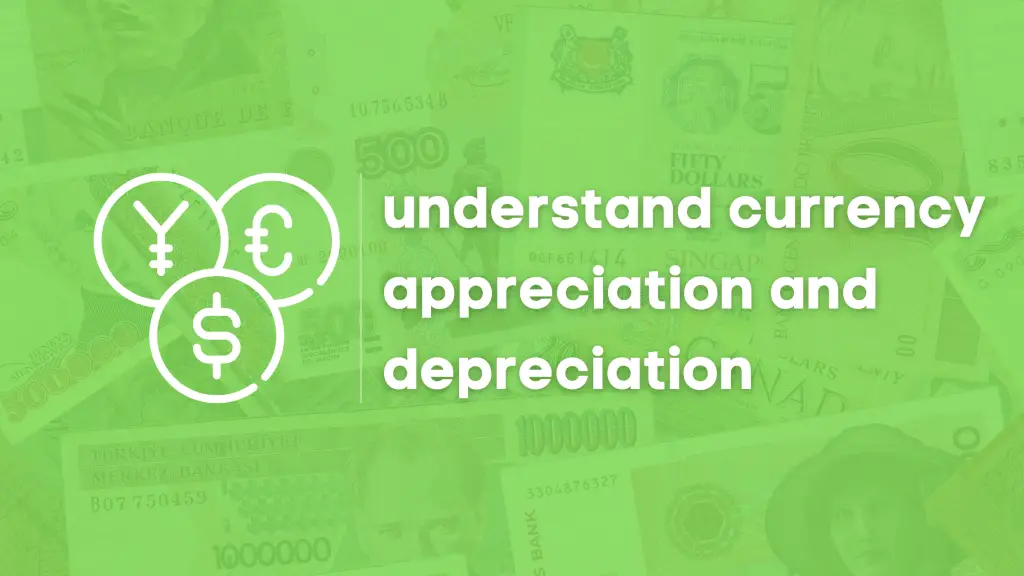This is a Guest Post by Abhi Raj of windows ground
If you follow the news, you have encountered terms like appreciation or depreciation of a currency. Today in this beginner friendly guide you are going to learn what exactly appreciation and depreciation mean in a currency and why it happens, followed by a short example so you will understand easily.
What is currency appreciation and depreciation?
To understand what currency appreciation and depreciation means in the economic world, let’s first understand what these two terms mean.
When the value of something goes up compared to it’s past value, it is called appreciation or to put it simply “increase in value” and is called appreciation.
And whenever something’s value decreases compared to its past value, it is called depreciation.
What is currency appreciation?
In investing, currency appreciation is the increase in value of a currency against one or more other foreign currencies. Though mostly the value of the currency it is compared to is the U.S. Dollar (USD).
For example, you may have heard news like: “The Indian Rupee appreciated by 19 paise to end at 72.80 against the US dollar on Monday”. which basically means that earlier the value of INR (Indian Rupee) was 72.61 but due to some reasons now the value of INR has increased by 20 paise/points and thus stopped at 72.80 against the US dollar.
There is a chance that you may hear words such as surges or rises instead of appreciated, but they all mean the same thing.
What is currency depreciation?
Since now you know what currency appreciation is, understanding currency depreciation won’t be hard; Just think of the opposite.
Currency depreciation is the total decrease or loss in value of a country’s currency compared to the U.S. dollar or any other foreign currency.
Let’s understand with an example: “Rupee falls by 45 paisa against USD”
Here what the headline simply says is, the value of INR has decreased by 45 paise/points from it’s past value, against the US dollar.
You may hear terms such as falls or hits instead of depreciated, but they all mean the same thing.
Now that you have finally understood what these two terms are, you might be wondering why exactly does the value of a currency increase or decrease from time to time?
Why does currency appreciate or depreciate?
There are lots of factors that make a currency appreciate or depreciate, but it is mainly due to supply and demand.
When a country increases its supply of currency, then the value of it’s currency goes down and thus depreciates and when there is more demand for a currency compared to the supply, the currency appreciates.
A real example of this is KWT (Kuwaiti Dinar), which is one of the Strongest Currencies in the world, and the reason for that is because Kuwait is a major oil supplier to the world. Kuwait holds approximately 7% of global oil reserves and since Kuwait exports so much oil to other countries and doesn’t import from any country, thus the value of KWT is so high.
This is just one factor. There are lots of several other factors that affect the value of a currency. Which we will talk about some other time.
Summary
In a nutshell: Currency appreciation and depreciation refer to the increase or decrease in the value of a currency against another foreign currency or the US dollar and the reason their value increases or decreases is based on supply and demand.
This was a guest post by Abhi Raj and you can follow him on LinkedIn and visit his website at WindowsGround.com.
